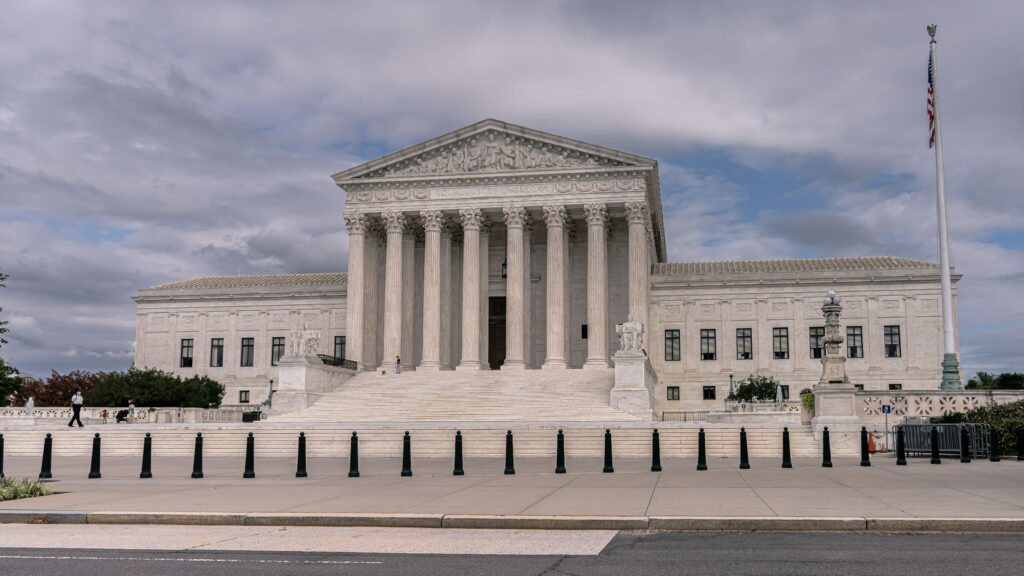
Last week, attorneys for photographer Lynn Goldsmith filed a reply brief in The Andy Warhol Foundation v. Goldsmith, a case headed to the Supreme Court this fall. In June, Authors Alliance submitted an amicus brief in this case in support of appellant the Warhol Foundation (“AWF”) after they submitted their own brief, and we have been covering this case on our blog since the Second Circuit’s opinion was handed down last year.
The lawsuit concerns a series of Andy Warhol screen prints and sketches depicting the late musician Prince, known as the Prince Series and inspired by a photograph taken by Goldsmith. The images in the case were created after a first image was commissioned by Vanity Fair based on the photograph taken by Goldsmith, authorized pursuant to separate agreements between Vanity Fair and Goldsmith and Vanity Fair and Warhol. The authorized Warhol image appeared in the magazine in 1984 and included credit for both Goldsmith and Warhol. However, Warhol went on to create fifteen additional works of the image in the same style, which are the subject of the litigation.
After learning of the additional images after Prince’s death, Goldsmith sued AWF for copyright infringement, alleging that the Prince Series infringed her copyright in the photograph of Prince. The district court for the Southern District of New York had found for AWF on the fair use grounds, as the Prince Series “transformed Prince from a vulnerable, uncomfortable person” as seen in Goldsmith’s photograph “to an iconic larger-than-life-figure.” Yet the Second Circuit went on to reverse the district court’s decision, holding that since comparing the Goldsmith photograph and the Prince series side-by-side, they appeared visually similar, Warhol’s use was not transformative. Then, AWF appealed the decision to the U.S. Supreme Court, who agreed to hear the case this upcoming term.
Goldsmith makes two primary arguments in her brief: first, that Warhol’s use of Goldsmith’s photograph was not transformative. Second, Goldsmith argues that the test for transformativeness proposed by AWF is not workable.
Regarding the question of whether Warhol’s use was transformative, Goldsmith argues that a secondary use is transformative “only if that use must necessarily copy from the original without ‘supersed[ing] the use of the original work, and substitut[ing] … for it.’ “ According to Goldsmith’s view, because Warhol did not have to copy Goldsmith’s photograph in order to create a silk screen depiction of Prince (presumably, other pictures of Prince could have worked just as well), the use is not a transformative one. Goldsmith draws on principles governing parody fair uses, which by definition must draw from the original work in order to function as effective parodies, to argue that it is always the case that a transformative use is one in which the copying was “necessary.” The brief also argues that a finding of transformative use requires that the secondary work does not “usurp the market” for the first one. While it is true that when a use is transformative, it is generally less likely that it will usurp the market for the original work, the question of the market effects is a separate consideration in fair use analysis than the transformativeness inquiry.
Goldsmith also defends the Second Circuit’s novel test for transformativeness, arguing that the Second Circuit reached the correct outcome because the two works shared the same “purposes”: being works of art and depictions of Prince. As Authors Alliance explained in our amicus brief, this argument misunderstands the “purpose and character” inquiry: a work might have the purpose of being a parody, as in Campbell, or serve the purpose of news reporting, as in many other fair use cases, but the form of a work (a work of art) is not a purpose. Campbell concerned a parodic song, but the Court in that case did not state that the work’s purpose was serving as a song.
Goldsmith rejected AWF’s argument that the “new meaning or message” test, derived from the seminal Supreme Court decision, Campbell v. Acuff-Rose Music, is the proper one to apply in this case, going so far as to say that AWF’s formulation of the Campbell test would “upend copyright.” Goldsmith argues that the “new meaning or message” test is improper because the words of the test are absent from the statute that codifies fair use. The brief further argues that it is improper for courts to consider “meaning,” because the meaning of an expressive work is highly subjective. Yet this argument relies on an oversimplified version of Campbell’s test for transformativeness. That decision directs courts to consider a secondary work’s “new meaning or message” as part of its analysis of the purpose and character of a work. Considerations such as commerciality and how well the use fits within the prototypical fair uses listed in the Copyright Act (such as criticism, news reporting, and teaching) are also relevant.
While Authors Alliance disagrees with much of the argument in Goldsmith’s brief, we appreciate the concerns it raises about striking the proper balance between protecting copyright holders’ exclusive rights and ensuring that socially beneficial onward creation can flourish. While we believe that Goldsmith argues for a balance of rights that tips too far in favor of a rightsholder’s ability to control secondary uses, it is clear that authors need clear guidance about that balance to continue to rely on fair use, and this case asks the Supreme Court to provide just that. We will keep our readers apprised of updates as this case moves forward.
Discover more from Authors Alliance
Subscribe to get the latest posts sent to your email.
